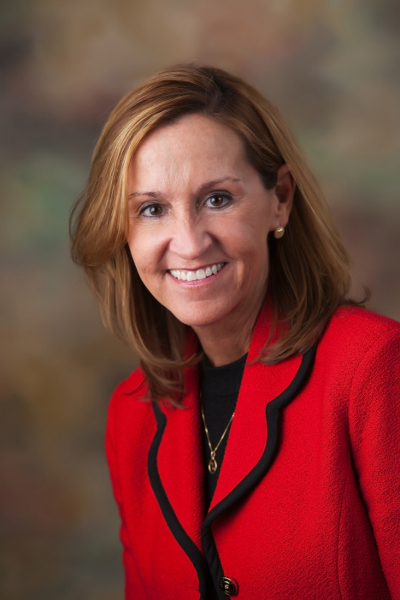The days of hospitals or health systems and physician groups working independently and with a level of distrust are falling by the wayside as the parties are integrating rapidly in reaction to the changes brought on by healthcare reform. In fact, the percentage of independent physicians is projected to drop to just 36 percent this year, according to an American Medical News report. Comparatively, in 2000, 57 percent of the country's physicians were independent.
Many hospitals and systems are either considering clinical integration or have already begun the lengthy, strategy-laden process. Because the process of integrating with physicians is a long and potentially expensive one, it is important to avoid as many mistakes as possible in order to be successful. Here, three healthcare experts lay out four common integration mistakes and how to avoid them.
1. Not identifying and discussing reasons for integration
Some hospitals or health systems may feel tempted to start integrating just because other organizations in their  market are doing so. However, healthcare organizations need to have their own, strong reasons to move forward with integration in order to be truly successful.
market are doing so. However, healthcare organizations need to have their own, strong reasons to move forward with integration in order to be truly successful.
"There should be compelling reasons for an integration strategy," says Julie Manas, president and CEO of Sacred Heart Hospital in Eau Claire, Wis., and president of Hospital Sisters Health System's western Wisconsin division. When deciding whether or not to pursue an integrated model of care, she recommends considering all aspects of the change. Hospital and health system executives should be able to communicate why their organization is interested in integration, how it will improve the care provided by the organization and how much it will cost in all aspects — financially and also in human and political capital. Also, it is extremely important to know the legal issues associated with the chosen integration approach.
If an organization's leaders can articulate answers to these questions, they will be well-equipped to begin the integration process.
2. Believing integration only means employing physicians
It is important to remember that employment is not the only way to align and clinically integrate with physicians. "Employment is one of those alignment models, but certainly not the only option," Ms. Manas says. Beyond employment, hospitals and health systems can utilize medical directorships, professional service agreements, joint ventures and co-management contracts. Through those alignment strategies, hospitals and health systems can then integrate with the physicians and share patient care information in real time.
Historically, physicians have been an autonomous, independent group of professionals, so even if the physicians are employed, that does not necessarily mean they are aligned. "Just because a physician is employed doesn't mean you can tell them what to do," explains Rick Weil, PhD, a partner and member of Oliver Wyman's health & life sciences practice.
Ms. Manas agrees. "Just because a physician becomes an employee of a health system does not ensure that he or she is committed to the mission and values of the organization," she says.
To avoid the effects of that phenomenon, hospitals need to remember that when it comes to alignment, one size does not fit all. "The approach should be tailored to the needs and interests of the organization, the patients, the physicians and the community," Ms. Manas says. That way, physicians are more likely to buy into and feel comfortable with the alignment.
3. Failing to communicate properly
A lot of the success in a clinical integration strategy comes down to communicating between all of the players, something that many hospitals and health systems have gotten tripped up on in the past that can lead to road bumps during and after the integration process. Communication was a challenging aspect of integration for HealthEast Care System in St. Paul, Minn. "We could have done more communicating to the broader medical staff within our community," says Tom Schmitt, senior vice president of ACO, clinics and outpatient services, on HealthEast's journey to integrate with physicians and become an accountable care organization. "Communication is critical to establishing a solid understanding and trust among the various parties."
Communication was a challenging aspect of integration for HealthEast Care System in St. Paul, Minn. "We could have done more communicating to the broader medical staff within our community," says Tom Schmitt, senior vice president of ACO, clinics and outpatient services, on HealthEast's journey to integrate with physicians and become an accountable care organization. "Communication is critical to establishing a solid understanding and trust among the various parties."
"Transparent and frequent communication is key to a successful integration," Ms. Manas says. "Lack of information can create confusion and mistrust."
Mr. Weil agrees that communication is paramount when integrating with physicians. "You need to talk about what [everyone's] roles need to look like," he says, in order to be successful in a new integration model.
4. Not considering the future
Even though the catalyst to many hospitals' and health systems' new integration strategies have been in reaction to healthcare reform, some organizations have not considered how those changes will factor in to their new physician alignment strategy.
"The biggest mistake people continue to make is pursuing…integration with an eye on tomorrow's model, but executing agreements on yesterday's model," says Mr. Weil. "You need to modify the agreements in order to be consistent with what you need in tomorrow's model." Mr. Weil encourages healthcare organizations to consider executing alignment contracts and physician compensation using something other than a fee-for-service or RVU model.
Mr. Schmitt says that in HealthEast's integration model, it took time to determine the financial model of alignment. "It took a while to break through the notion that this was not going to be a 'get rich quick' scheme," he says. "What was truly important was that we create a sustainable model of partnership and care delivery where we all succeed together."
"Tomorrow's model…is about patient-centered, value-based care," Mr. Weil says. And the physician alignment contracts should reflect that.


